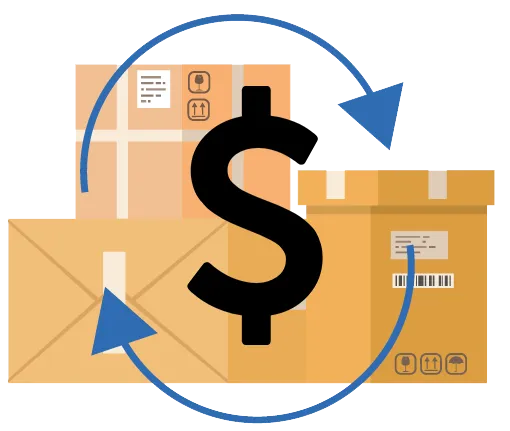5 Reasons That Excess Inventory May Be Causing Unrealized Losses
Estimated read time: 3.5 minutes
There are a lot of factors that go into successfully marketing a winning product. These are exciting to learn about and to put into practice, but what about those products that don't work out as well as the grand slam products do?
Over 95% of overstocked inventory in the USA gets liquidated into the secondary market to a company like us, Leister Ventures.
But the question is, when is the best time to consider your inventory as "excess" or "overstocked" so that you can minimize the hidden unrealized losses that occur?
Let's first consider 5 factors that commonly cost retailers and distributors hidden losses and see if any apply to your inventory.
1. Storage Costs
Space costs money and the cost is increasing every year. In the start of 2022 we have seen double digit percentage increases for warehouse space rents throughout the US. Many times businesses force expanding its facility sizes to accommodate non-cash producing inventory storage.
2. Customer Conditioning
Everyone likes a good deal, especially for purchases that aren't urgent. Offering your customers a good deal can be a great thing, but what are the hidden costs of doing so? According to a 2018 survey by Zimmer Marketing, 64% of consumers will wait to make a purchase until there is a discount for that item. This conditioning can leave businesses struggling to sell regular priced goods and forced to cut margins and offer discounts to make a sale. An alternative would be to work with a secondary distributor, like Leister Ventures, to remove of excess inventory without discounting the brand's pricing value to existing buyers.
3. Expiration & Discontinuation
In today's times everything seems to have an expiration to it even if it isn't marked with an expiration or best by date. Of course we are familiar with shelf life for grocery, topical, and beverage items. A more recurring form of "expiration" for other items has become software / web support discontinuation. Modern electronics and devices can be extremely convenient for our lives, but more often than ever before we are seeing manufacturers delete apps and software that are required for the devices to work. Do you have aged devices that are software reliant that could be at risk of discontinuation? Let us relieve you of the risks of holding useless items.
4. Opportunity Cost
Let's say that a company offers 5 widgets for sale. Widgets 1-4 have strong monthly turnover rates, but widget 5 sees little to no sales every month. There are two options in this scenario, hold on to widget 5 and focus company resources attempting to create demand for the product or remove widget 5 from the catalog for immediate cash to put towards excelling the success of widgets 1-4. Slow selling SKUs tie up money, exhaust time and labor, and ultimately slow the growth of a company.
5. Antiquated Offerings
It's not only Apple and Samsung coming out with new models annually. Most manufacturers are adding minor updates to products every year or so and are very successful at convincing the majority that they need to upgrade for those new features. Many retailers and distributors find themselves removing the previous model and replacing it with the newer model to meet the customer's expectations of the newest and best item. Companies failing to offer these newer models risk losing business to vendors who are offering the new models.
Do you find your company facing any of the above challenges? Leister Ventures is a reverse logistics specialist handling tens of thousands of excess units on a monthly basis. It only takes a few minutes to turn your excess inventory into cash when working with Leister Ventures.
